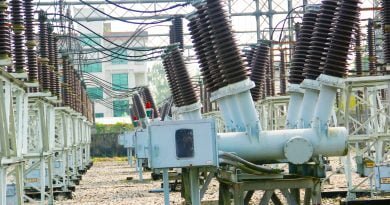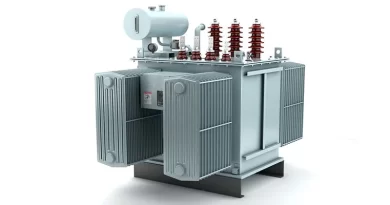Maintenance of Different Types of Transformers – Monthly, Bi-Yearly and Yearly Basis
Maintenance of Different Types of Transformers – Monthly, Bi-Yearly and Yearly Basis
Introduction
Transformers represent critical grid assets requiring periodic servicing and preventive maintenance to ensure optimal performance and maximize longevity. Let’s examine transformer maintenance’s importance and planning aspects and explore common monthly, six-monthly, annual, and multi-year maintenance activities needed for reliable operation.
Transformers are the silent workhorses of the electrical world, facilitating electricity transmission from power stations to homes and industries. These vital components often operate without interruption for years but are not immune to wear and tear. To ensure they continue performing at their best, regular maintenance is essential.
Importance of Transformer Maintenance
Proper maintenance is crucial for:
- Minimizing transformer failures that lead to prolonged outages
- Optimizing efficiency over years as performance slowly deteriorates
- Detecting and diagnosing developing problems early before faults occur
- Ensuring reliable operation exceeding expected design life
- Fulfilling legal requirements and following utility best practices
Transformer Failure Impact
Being indispensable assets, transformer failures lead to major replacement costs, extensive downtime, and revenue losses that could have been minimized by preventive maintenance.
Maintenance Planning
A comprehensive maintenance plan covers routine inspection and servicing tasks on a monthly, quarterly, and annual basis, along with appropriate testing and diagnostics methods to apply.

Thorough monthly maintenance involves:
Monthly Maintenance
Visual Inspections
Observe external conditions, check for leaks and terminal issues, and listen for any unusual noise.
Breathers
Check breather conditions and Replace desiccant if needed to maintain proper moisture absorption.
Temperature Monitoring
Log top oil and winding hot spot temperatures. Significant variation indicates potential problems.
Earthing
Verify ground connection integrity for transformer, enclosure, etc. Check ground rod conditions.
Minor Upkeep
Wipe and clean surfaces. Lubricate cooling fans, pumps, etc., if needed. Inspect access doors, gauges, etc.
Six-monthly maintenance includes:
Six-Monthly Maintenance
Insulation Testing
Perform insulation resistance tests on windings to ground, between windings, etc., using 5 kV or higher megger.
Bushings
Check for cracks, chipping, or dirt on bushings—test for insulation breakdown.
Paint, Gaskets, etc.
Repair paint damage. Examine gasket seals for tightness. Check conservator oil levels.
Oil Dielectric Tests
Sample oil dielectric breakdown voltage and tan delta tested to evaluate deterioration.
Contact resistance
Check tap changer contact resistance for high voltage variations indicating wear.
Oil Testing and Analysis
Regular oil testing and analysis provide insights into the transformer’s health. It can detect the presence of gases, moisture, and other contaminants, helping diagnose potential issues early.
DGA (Dissolved Gas Analysis)
DGA is a critical diagnostic tool. It measures and analyzes gases dissolved in the oil, which can indicate problems like overheating, arcing, or partial discharge.
Insulation Resistance Testing
Insulation resistance testing ensures that the insulation materials within the transformer are still effective. A decrease in insulation resistance can be a sign of deterioration.
Annual maintenance activities required:
Annual Maintenance
Drying and Oil Processing
Oil moisture removal is done through drying, degassing, and filtration processes if required.
Leak Testing
Pressurize the tank and radiators with dry air to check for any minute leaks if oil indications show moisture ingress.
Winding Resistance Testing
Precisely measure winding resistances and temperature rises to detect winding defects.
Turns Ratio Testing
Turns ratio tests verify that the transformer operates at the correct stepped-up or down voltages.
Oil Sample Testing
Detailed lab tests assess oil quality – dielectric strength, acidity, metals content, visual appearance, etc.
Electrical Testing
Yearly electrical testing involves a comprehensive examination of the transformer’s electrical properties. This includes tests for turns ratio, winding resistance, and load losses.
Load Tap Changer (LTC) Inspection
For transformers equipped with LTCs, yearly inspections are vital. LTCs control the output voltage, and any issues can lead to voltage instability.
Core and Winding Inspection
A thorough inspection of the core and winding is crucial. This includes checking for signs of overheating, corrosion, or mechanical damage.
Major servicing needs between 3 to 5 years:
3 to 5-Year Maintenance
Breaker Contact Inspection
Inspect and clean transformer breaker contacts. Replace worn contacts if needed.
Additional Insulation Tests
Perform insulation power factor tip-up tests, exciting current tests, etc., for evaluating insulation integrity.
Tank Sealing Checks
Examine the condition of lid seals, gaskets, and silica gel breathers—pressure test tanks.
Bushing Reconditioning
If the oil leak analysis indicates water content in paper insulation, bushings might need reconditioning.
Corrective maintenance needed whenever faults arise:
Corrective Maintenance
Identifying and Diagnosing Problems
Based on visual clues, temperature changes, abnormal behavior, test trends etc.
Carrying Out Repairs
Address issues – contact wear, winding damage, core issues, tap changer malfunction, etc. by qualified technicians.
Post-repair testing and Commissioning
Extensive testing was done to verify repairs and ensure proper functioning before being back in service.
Various maintenance tools aid testing:
Transformer Maintenance Tools
Insulation Testers
Megohmmeters are used for insulation resistance and polarization index measurements.
Winding Resistance Meters
Precisely determine winding resistances by eliminating lead resistance effects.
Turns Ratio Meters
Check transformer turns ratio and phase relation during no-load conditions.
Oil Testers
Determine oil’s dielectric breakdown strength, moisture content, acidity etc.
Stringent documentation provides insights:
Documentation and Reporting
Maintenance Logs
Detailed written reports on every preventive and corrective maintenance activity with test data.
Identification Tags
Clear tags indicating maintenance dates, tests done, results, and next due date on the transformer.
Failure Reports
Comprehensive documentation of the sequence of events and parameters that lead to any failure helps analyze the root cause.
Histograms and Trend Analysis
Maintenance data plotted over time provides insights into deterioration rates and guides predictive maintenance.
Proper maintenance fundamentally safeguards system reliability:
Advantages of Proper Maintenance
- Maximizes transformer lifetime through early defect detection.
- Minimizes costly unplanned outages and major equipment damages.
- Ensures optimal efficiency and rated performance year after year.
- Directly improves overall grid reliability and safety.
- Boosts customer satisfaction through uninterrupted quality power supply.
Importance of Regular Maintenance
Regular maintenance is not just a routine chore; it is the key to ensuring the safety, reliability, and longevity of transformers.
Ensuring Safety
Proper maintenance reduces the risk of catastrophic failures, ensuring the safety of personnel and equipment.
Extending Transformer Lifespan
Well-maintained transformers can operate efficiently for decades, avoiding premature replacements.
Cost Savings
Regular maintenance is an investment that pays off by preventing costly breakdowns and extending the life of transformers.
Summary
Comprehensive transformer maintenance encompassing thorough periodic inspections, testing important parameters, corrective actions as needed, and meticulous record-keeping is indispensable for power utilities. While mandatory, transformer maintenance requires optimized planning considering costs and advancing monitoring and analytic techniques further aid predictive maintenance for minimizing unforeseen failures.
Frequently Asked Questions (FAQs)
FAQ 1: Why is transformer maintenance essential?
- Transformer maintenance is essential to ensure safety, extend lifespan, and prevent costly breakdowns.
FAQ 2: How often should I check the oil level in a transformer?
- The oil level should be checked monthly to ensure proper cooling and insulation.
FAQ 3: What is DGA, and why is it important?
- DGA (Dissolved Gas Analysis) is important for detecting transformer issues by analyzing gases dissolved in the oil.
FAQ 4: Can I perform transformer maintenance myself?
- Qualified professionals should carry out transformer maintenance with the necessary expertise and equipment.
FAQ 5: What happens if a transformer is not properly maintained?
- Neglected transformers can experience premature failures, leading to downtime and costly replacements.
FAQ 6: Is it possible to over-maintain a transformer?
- Over-maintenance is unlikely but can be avoided by following manufacturer guidelines and industry best practices.
FAQ 7: Are there any signs that indicate a transformer needs maintenance?
- Signs include unusual noises, overheating, oil leaks, or erratic electrical behavior.
FAQ 8: Can I extend the lifespan of an old transformer through maintenance?
- Proper maintenance can extend the lifespan of older transformers, improving their reliability.
FAQ 9: Are there any risks associated with transformer maintenance?
- Risks are minimal when maintenance is performed by trained professionals following safety protocols.
FAQ 10: How can I find a qualified professional for transformer maintenance?
- Look for certified electrical engineering firms or technicians with experience in transformer maintenance.
MCQs
- Why is maintenance essential for transformers?
Proper maintenance maximizes transformer life, efficiency, and reliability while minimizing failures that lead to costly outages and replacement.
- What routine maintenance applies to transformers?
Common routine maintenance includes monthly inspections and monitoring with bi-annual servicing and diagnostic tests, plus heavier maintenance every few years.
- What tools are used in transformer maintenance?
Key tools are insulation testers, winding resistance meters, turns ratio meters, oil dielectric testers, etc., for insulation, winding, and oil quality tests.
- What monthly checks apply for transformers?
Critical monthly tasks are thorough visual inspections for leaks, noise, terminals, etc.; monitoring temperatures, checking earthing, and minor upkeep.
- What annual maintenance applies to transformers?
Major annual maintenance involves drying, leak testing, resistance, turns ratio, detailed lab oil tests, and proactively replacing worn parts.
- How can developing transformer problems be detected early?
Routine testing, temperature and operational monitoring, and visual inspections help detect potential issues early.
- What are key 6-monthly maintenance routines for transformers?
Major 6-monthly tasks are insulation resistance testing, checking bushings, gaskets, and seals, performing oil tests, and inspecting tap changer contacts.
Logs of all maintenance data help determine deterioration
- Why are logs and histories important in transformer maintenance?
Trends for guiding predictive maintenance decisions.
- How can transformer lifespan be maximized?
Lifespan expands greatly through rigorous routine maintenance and overhauls compared to running transformers till failure.
- When are special servicing and reconditioning needed in transformer maintenance?
Beyond routine maintenance, major servicing like tank repairs, bushing overhaul, etc., may be required every 4-5 years based on condition assessments.



